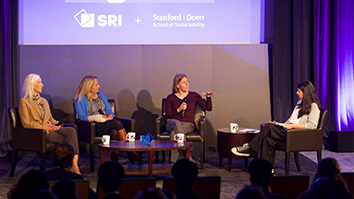Citation
Michalchik, V. & Penuel, B. (2003). Case study of technology access and learning in twelve communities. Menlo Park, CA: SRI International.
Introduction
The disparity in computer access and literacy among different groups in the United States is well documented. According to the most recent statistics from the U.S. Census Bureau (2001), Americans with the highest annual incomes ($75,000 or more) are three times as likely have a computer at home and four times as likely to be connected to the Internet as Americans from low-income households earning less than $25,000 per year. Statistics like these are not simple consequences of differences in buying power or material lifestyle. They reflect deep differences in educational access and opportunity; people in low-income areas lack a social infrastructure of technology-literate friends, teachers, and colleagues to initiate and inform them through the casual interactions of daily life. Yet computer skills—including word processing, data management, and the ability to use email and Web applications—more and more stand as fundamental qualifications for employment and requisites for functioning in the social and economic life of America today.
Since 1999, the U.S. Department of Education has funded a major initiative to meet the needs for technology access and training through its Community Technology Centers program. Recognizing that schools alone cannot provide sufficient opportunities for low income children and adults to learn technology, the Department has instituted a program of funding community-based organizations, faith-based entities, community colleges, school districts, and other local agencies to create technology access and learning centers to serve local residents. This initiative builds on the documented success community-based organizations have had since the 1980s in creating learning environments that put technological tools into the hands of those least likely to have access elsewhere (Fowells & Lazarus, 2001; Strover, Straubhaar & Tufekcioglu 2001). Because of this record of success, in addition to the U.S. Department of Education, government agencies such as the National Science Foundation, nonprofit organizations such as PowerUP, the Urban League, and the Boys and Girls Clubs of America, and for-profit corporations such as Intel and Cisco, have contributed to building over 1,000 CTCs across the United States in the last several years.


